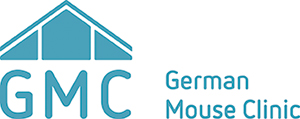Behaviour
Introduction
The Behavioural Neuroscience Unit contributes to the GMC the assessment for exploratory, motivational, emotional, locomotor, sensory gating, olfactory function, learning and memory, stress reactivity and related functional brain alteration phenotypes. Our research goal is the elucidation of the molecular and genetic basis of behavioural impairments that are relevant for human neuropsychiatric disorders such as anxiety disorders, post-traumatic stress disorder, depression, schizophrenia, autism, attention-deficit hyperactivity disorder, Parkinson’s and Alzheimer’s Disease. We are particularly interested in relating behavioural changes to specific alterations in the brain. To this end we investigate brain volumetrics and neuronal morphology, and quantitatively assess expression of different markers for neurotransmitter systems, synaptic plasticity, adult neurogenesis, myelination and inflammation.
Screening pipeline
We participate in the screening pipeline by assessing emotional, exploratory and spontaneous locomotor behaviour in the Open Field test, and sensorimotor gating by pre-pulse inhibition of the acoustic startle reflex. This renders a first indication of possible anxiety-related, locomotor and schizophrenia-related endophenotyp
Hypothesis-driven pipelines
Dependent on primary results and/or additional information about the mouse model more in-depth-analysis can be performed in hypothesis-driven pipelines.
B. Pipeline “Emotionality”
- Open Field test – spontaneous exploratory behaviour in a novel environment, anxiety
- Acoustic Startle & PPI - prepulse inhibition of the acoustic startle reflex: sensorimotor information processing; deficits are related to schizophrenia and other neuropsychiatric diseases
- Light/Dark Box test – anxiety (brightness)
- Elevated Plus-Maze test – anxiety (height)
- Social Interaction test – anxiety (social phobia)
- Swim Ability test – swim ability
- Tail Suspension test – depression-related behaviour
- Acute Stress test – stress responsivity, function of the hypothalamic-pituitary-adrenal axis
C. Pipeline “Memory impairment”
- Spontaneous alternation in the Y-maze – spatial working memory
- Social Discrimination test – social recognition memory, olfactory memory
- Object Recognition test – object recognition memory
- IntelliCage – spatial learning and memory, reversal learning, reward learning
- Olfactory discrimination – olfactory learning and function: sensitivity, discriminatory abilities, long-term olfactory memory
- Neurogenesis rate – assessment of adult neurogenesis in brain hippocampus, olfactory bulb and rostral migratory stream using different neurogenesis markers; deficits are related to memory impairments
- Pharmacologic challenge – possibility to validate behavioural alterations by influencing them through application of relevant pharmacological agents, e.g. specific compounds to enhance memory or specific receptor ligands
D. Pipeline “Motor disorders”
- Vertical Pole – striatal function; deficits are related to neurodegenerative diseases
- Gait analysis – automated analysis of spontaneous gait using the CatWalk system (Noldus, Wageningen, The Netherlands); deficits are related to motor and neurodegenerative diseases
- For other tests of this pipeline seeNeurology Unit
N. Pipeline “General neuro-behavioural assessment”
- Open Field test – spontaneous exploratory behaviour in a novel environment, anxiety
- Acoustic Startle & PPI - prepulse inhibition of the acoustic startle reflex: sensorimotor information processing; deficits are related to schizophrenia and other neuropsychiatric diseases
- Spontaneous alternation in the Y-maze – spatial working memory
- Social Discrimination test – social recognition memory, olfactory memory
- Gait analysis – automated analysis of spontaneous gait using the CatWalk system (Noldus, Wageningen, The Netherlands); deficits are related to motor and neurodegenerative diseases
- For other tests of this pipeline see Neurology and Eye Unit
Brain analysis
- Immunohistochemistry
- Microscopy (Confocal, Epifluorescence)
- Quantitative stereological analysis

